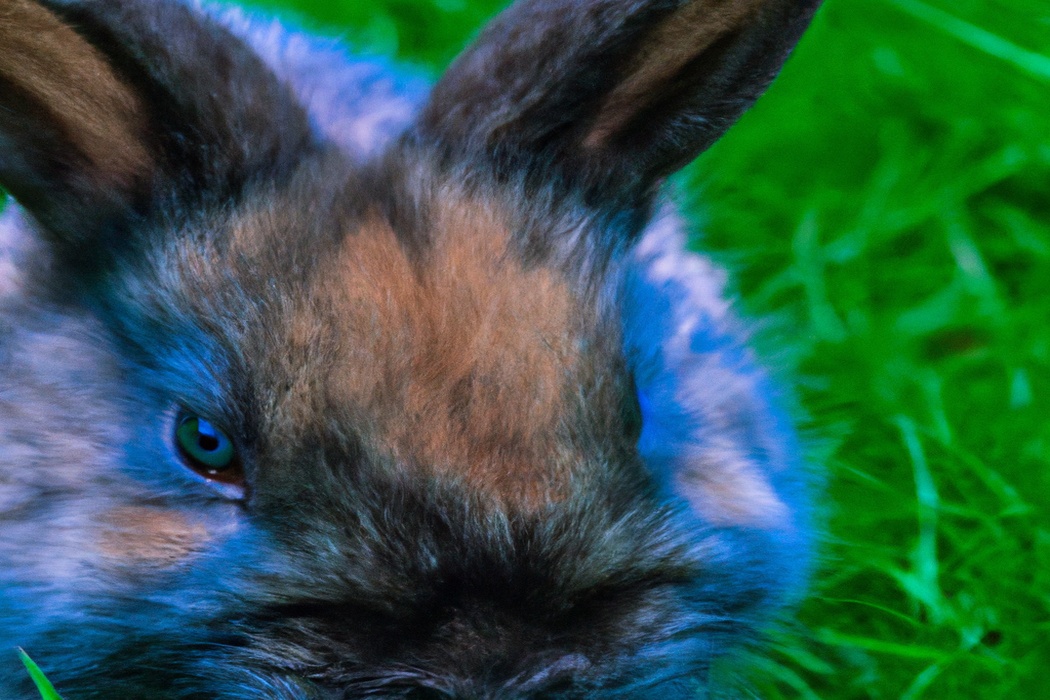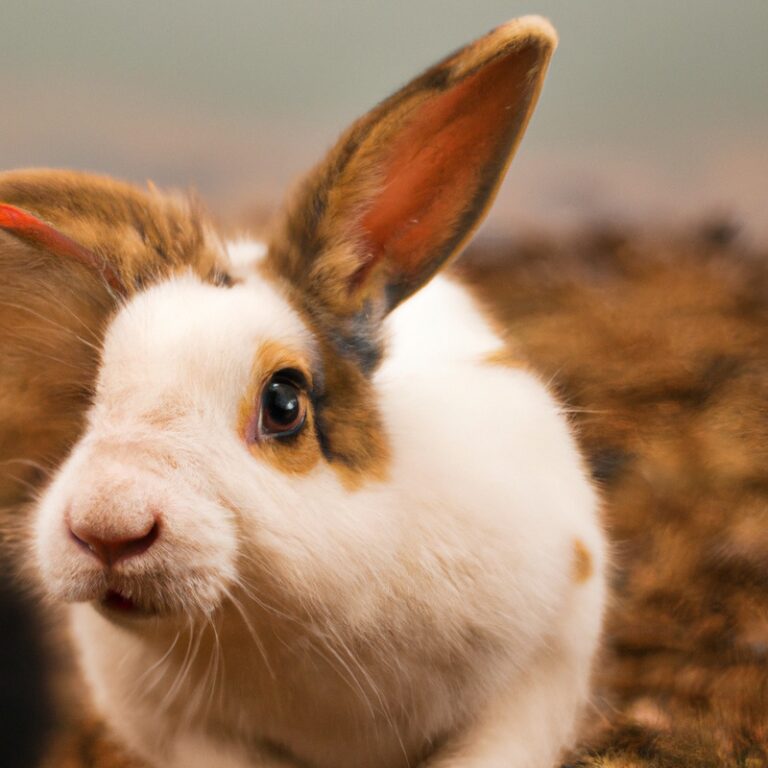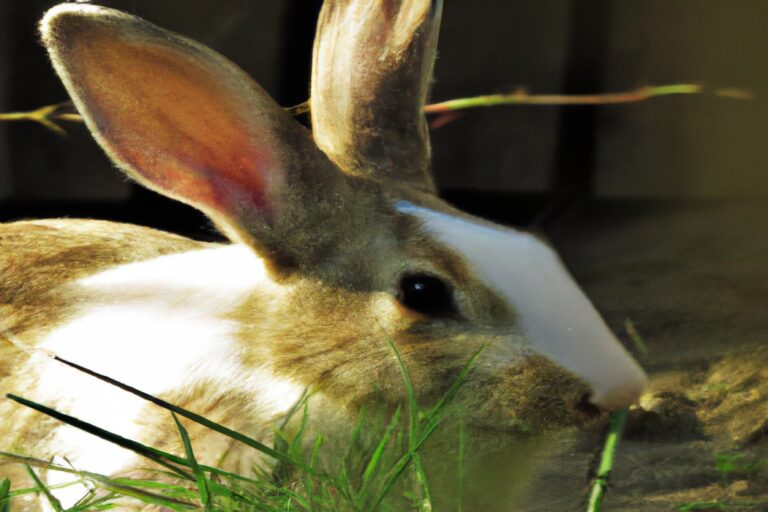What Type Of Consumer Is a Rabbit? Fascinating!
Key Takeaways:
- Rabbits are herbivorous animals and are considered as selective consumers.
- The digestive system of rabbits is specialized for processing fibrous plant materials.
- Rabbits have a high nutritional requirement for fiber in their diet.
- They are considered as grazers and prefer to eat small amounts of food throughout the day.
Are you curious to know what type of consumer a rabbit is? Well, you’ve come to the right place! Understanding consumer behavior is crucial in various industries, and rabbits have their own unique set of characteristics and preferences that influence their choices.
In this article, we’ll delve into the physical and behavioral traits of rabbit consumers, their dietary preferences, and the factors that influence their behavior.
Whether you’re a rabbit owner, a business catering to rabbit consumers, or simply interested in these adorable creatures, this article will provide valuable insights into meeting the needs of rabbit consumers. Let’s hop right in!
| Type of Consumer | Description |
|---|---|
| Herbivore | Consumes only plant material |
| Primary Consumer | Feeds directly on producers (plants) |
| Grass Consumer | Mainly feeds on grass and other vegetation |
| Selective Consumer | Chooses specific parts of plants to eat |
Understanding Consumer Types
Understanding Consumer Types is essential for businesses to effectively connect with and cater to their target audience.
What is a Consumer?
A consumer is someone who purchases goods or services for personal use or consumption. Simply put, it’s you when you buy something, whether it’s an everyday item like groceries or a larger purchase like a car.
Consumers play a vital role in the economy, as their spending habits can influence businesses and market trends.
Ultimately, as a consumer, you have the power to make choices that can impact the products and services available to you.
Importance of Understanding Consumer Types
Understanding consumer types is crucial for businesses to effectively target their marketing efforts. By understanding the different characteristics, preferences, and behaviors of various consumer types, businesses can tailor their products and messages to resonate with their target audience.
This not only helps in attracting new customers but also in building customer loyalty.
By analyzing consumer types, businesses can also identify new market segments and opportunities for growth. Ultimately, understanding consumer types allows businesses to make informed decisions and maximize their chances of success in the market.
Characteristics of Rabbit Consumers
Rabbit consumers display distinct physical and behavioral traits, as well as specific dietary preferences.
Physical Traits of Rabbit Consumers
Rabbit consumers, in terms of physical traits, tend to have certain characteristics.
They have a strong sense of smell, which helps them locate food and identify potential predators.
With their long and prominent ears, they have excellent hearing abilities that help them detect even the slightest sounds.
Their powerful hind legs allow them to jump and run quickly, enabling them to escape from danger or catch prey.
Additionally, rabbit consumers have sharp claws that help them dig burrows or obtain food.
Behavioral Traits of Rabbit Consumers
Rabbit consumers exhibit certain behavioral traits that set them apart. They have a tendency to be cautious and vigilant, always on the lookout for potential dangers.
They are social animals, often seeking companionship and displaying strong bonding connections with their owners.
Rabbits are known to be curious and intelligent, requiring mental stimulation through interactive toys and activities. Additionally, they have specific dietary needs, with a preference for fresh vegetables and high-fiber hay.
Overall, understanding and catering to these unique behaviors is essential for ensuring the well-being of rabbit consumers.

Dietary Preferences of Rabbit Consumers
Rabbit consumers have a predominantly herbivorous diet, consisting mainly of grasses, leafy greens, and vegetables.
They also require a high-fiber diet to maintain their digestive health.
Hay is a crucial part of their diet, as it helps wear down their continuously growing teeth.
Additionally, rabbits should be given limited amounts of fruits and treats, as these can be high in sugar and lead to health issues.
It’s important to provide a balanced and varied diet for your rabbit, consulting with a veterinarian for specific dietary recommendations.

Factors Influencing Rabbit Consumer Behavior
Factors Influencing Rabbit Consumer Behavior: Instinctual, Environmental, and Social Factors.
Instinctual Factors
Instinctual factors play a significant role in the consumer behavior of rabbits.
These factors are inherent and innate to their species, influencing their choices and actions.
Here are some instinctual factors that influence rabbit consumer behavior:
- Foraging behavior: Rabbits are natural foragers and have a strong instinct to seek out and consume a variety of plant-based food. This instinct drives their preferences for fresh grass, leafy greens, and hay as primary food sources.
- Safety and security: Rabbits have a strong instinct to seek out and create safe environments. This instinct influences their preference for burrowing or hiding spots, as well as their response to potential threats. Providing them with secure hiding places and a calm environment can help satisfy this instinct.
- Reproduction: The instinct to reproduce also influences rabbit consumer behavior. Intact males may display territorial behavior and may be more selective in their food preferences. Additionally, pregnant or nursing females may have increased nutritional requirements, showcasing specific food preferences during these periods.
- Social interaction: Rabbits are social animals and have an instinctual need for companionship. This instinct influences their behavior towards other rabbits as well as humans. Proper socialization and interaction can positively impact their overall well-being and consumer behavior.
Understanding these instinctual factors can help you create a conducive environment for your rabbit and meet their natural needs.
By providing suitable food choices, secure living spaces, and opportunities for social interaction, you can ensure that your rabbit’s instinctual factors are satisfied, promoting their overall health and well-being.

Environmental Factors
Environmental factors play a significant role in influencing rabbit consumer behavior.
Rabbits are highly sensitive to their surroundings and are easily affected by changes in their environment.
Factors such as temperature, noise levels, and the presence of other animals can greatly impact a rabbit’s comfort and behavior.
Additionally, the availability of food, water, and suitable shelter also play a crucial role in determining a rabbit’s behavior as a consumer.
Providing a favorable environment for rabbits is essential in promoting their well-being and ensuring they exhibit natural behaviors.
Social Factors
Social factors play a significant role in influencing rabbit consumer behavior. Here are some key social factors to consider:
- Socialization: Rabbits are social animals and thrive when they have companionship. Whether they live with other rabbits or interact with humans, socialization impacts their behavior and well-being.
- Environmental factors: The social environment in which rabbits are raised and live affects their behavior. A positive and stimulating social environment with opportunities for interaction and play can lead to happier, more active rabbits.
- Human interaction: The way humans interact with rabbits can influence their behavior. Regular and positive human interaction, including gentle handling and bonding activities, can foster trust and a stronger human-animal bond.
- Exposure to other animals: Being exposed to other animals, such as cats or dogs, can shape a rabbit’s behavior. Early exposure and positive experiences can lead to a rabbit feeling comfortable and less fearful around other animals.
- Cultural norms and practices: Cultural norms and practices can also influence how rabbits are viewed and treated. Different cultures may have varying attitudes towards rabbits, which can impact their consumer behavior and welfare.
Remember, considering these social factors can help create a harmonious and enriching environment for rabbits, ensuring their well-being and promoting positive consumer behavior.
Meeting the Needs of Rabbit Consumers
To meet the needs of rabbit consumers, it is important to provide a nutritious diet, create a safe environment, and ensure social interaction.
Providing a Nutritious Diet
To provide a nutritious diet for your rabbit, you should focus on feeding them a balanced combination of hay, fresh vegetables, and rabbit pellets. Hay is crucial for their digestion and dental health, so make sure it’s always available.
Introduce a variety of leafy greens like kale and spinach, but be cautious with high-sugar vegetables.
Lastly, choose high-quality pellets that are specifically formulated for rabbits. Remember to monitor their food intake and consult a veterinarian for any specific dietary needs your rabbit may have.
Creating a Safe Environment
Creating a safe environment for your rabbit is essential to ensure their well-being and happiness. Here are some key steps to follow:
- Provide a suitable enclosure: Make sure the cage or hutch is spacious enough for your rabbit to move around comfortably. It should also be secure and escape-proof.
- Use rabbit-friendly bedding: Choose bedding material that is safe for rabbits, such as hay or paper-based products. Avoid cedar or pine shavings as they can be harmful to their respiratory system.
- Bunny-proof your home: Rabbits love to explore, so it’s important to remove any hazardous items that they can chew on or get tangled in. Secure electrical cords, keep toxic plants out of reach, and block off restricted areas.
- Offer a balanced diet: Provide fresh hay, high-quality pellets, and a variety of vegetables and fruits to ensure your rabbit gets all the necessary nutrients. Avoid feeding them toxic foods like chocolate or onions.
- Create a safe play area: Set up a designated play area where your rabbit can stretch their legs and engage in natural behaviors. Remove any potential hazards or toxic substances.
Remember, a safe environment is crucial for your rabbit’s health and happiness. By taking these steps, you can create a safe and enjoyable space for your furry friend to thrive.
Ensuring Social Interaction
Social interaction is an essential aspect of rabbit care. It’s important to regularly interact with your rabbit to promote their overall well-being.
Spend quality time with your rabbit every day, engaging in activities like gentle petting, playing, and talking to them.
Consider adopting a second rabbit to provide companionship. Rabbit socialization can enhance their happiness and prevent loneliness.
Ensure that your rabbit has a safe and comfortable living space that includes hiding spots and toys for enrichment.
Frequently Asked Questions
What do rabbits eat?
Rabbits primarily eat hay, fresh vegetables, and a small amount of pellets. Hay is a crucial part of their diet as it helps maintain their digestion and dental health.
You can provide them with a variety of vegetables like leafy greens, carrots, and bell peppers.
However, make sure to introduce new foods gradually to avoid stomach upset. It’s also essential to avoid giving them foods that are toxic to rabbits, such as chocolate, onions, and rhubarb.
Always provide fresh water and monitor their food intake to ensure they stay healthy.
How can I create a rabbit-friendly environment?
Creating a rabbit-friendly environment is essential for the well-being of these furry friends. Here’s how you can do it:
- Provide a spacious and safe living area: Rabbits need enough space to move around and stretch their legs. A large cage or a rabbit-proofed room is ideal.
- Offer a variety of toys and enrichment: Rabbits love to stay mentally and physically stimulated. Provide them with toys, tunnels, and chewing items to keep them entertained.
- Provide a proper diet: A balanced diet is crucial for a rabbit’s health. Offer a mix of hay, fresh vegetables, and a small amount of pellets. Avoid excessive sugary treats.
- Ensure a comfortable hiding place: Rabbits need a safe and cozy spot where they can retreat and feel secure. Provide them with a hiding house or a covered area in their enclosure.
- Keep their living area clean: Regularly clean their cage or living space to ensure hygiene. Remove any soiled bedding or litter, and regularly change their water.
By creating a rabbit-friendly environment, you can ensure that your bunny is happy, healthy, and thriving.
Do rabbits need companionship?
Rabbits are social animals and thrive on companionship. They benefit from having a companion to interact with, whether it’s another rabbit or even a compatible guinea pig.
Companionship provides them with mental stimulation, exercise, and a sense of security.
If you decide to have a single rabbit, make sure you give them plenty of attention and interaction to prevent loneliness. It’s essential to consider the well-being and happiness of your rabbit when deciding on their social environment.
Can rabbits be trained as pets?
Yes, rabbits can be trained as pets.
They are intelligent animals and can learn various behaviors through positive reinforcement training.
With patience and consistency, you can teach your rabbit to use a litter box, come when called, and even perform simple tricks.
Training can also help build a strong bond between you and your pet rabbit.
How do I know if my rabbit is happy and healthy?
Knowing if your rabbit is happy and healthy is important for their overall well-being. Here are some signs to look out for:
- Active and playful behavior: A happy rabbit will show enthusiasm by hopping, running, and exploring their environment.
- Good appetite and digestion: A healthy rabbit should have a healthy appetite and normal bowel movements.
- Bright and alert eyes: If your rabbit’s eyes are clear and bright, it’s a good indication of their well-being.
- Shiny fur and clean bottom: A healthy rabbit will have a glossy coat and a clean rear end.
Monitoring these signs regularly can help you ensure that your rabbit is happy and in good health. If you notice any changes or concerns, it’s always a good idea to consult with a veterinarian who specializes in rabbits.
Final Verdict
Understanding consumer types, including rabbits, is crucial for businesses and individuals alike. Rabbit consumers have unique physical and behavioral traits, as well as specific dietary preferences.
Factors such as instincts, environment, and social factors influence their behavior.
To meet the needs of rabbit consumers, it is important to provide a nutritious diet, create a safe environment, and ensure social interaction. By catering to these needs, businesses can effectively target this consumer group.
Overall, understanding and meeting the needs of rabbit consumers can lead to successful relationships and optimal well-being for these adorable pets.







